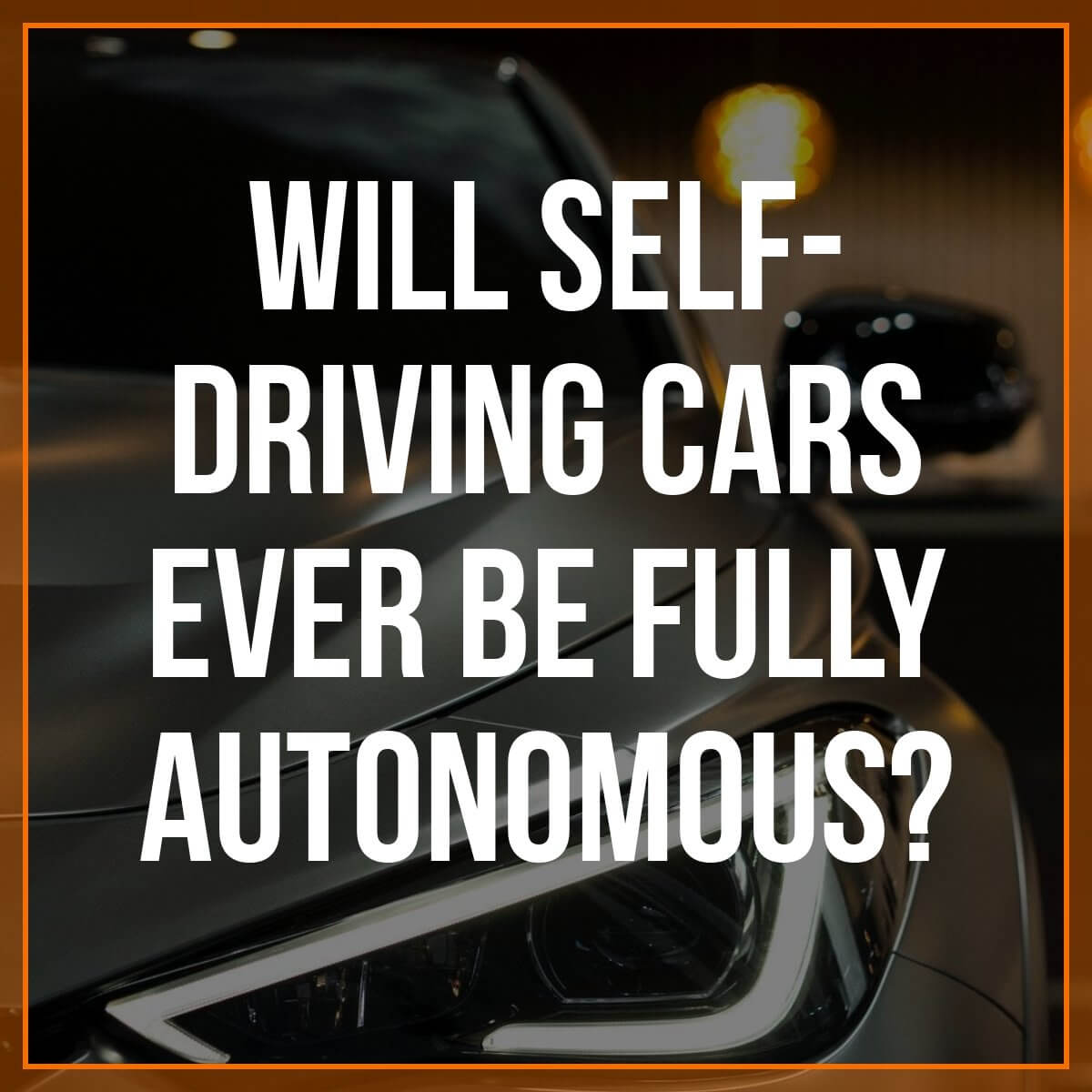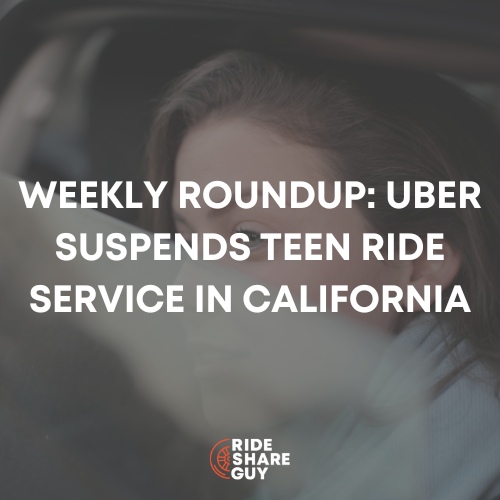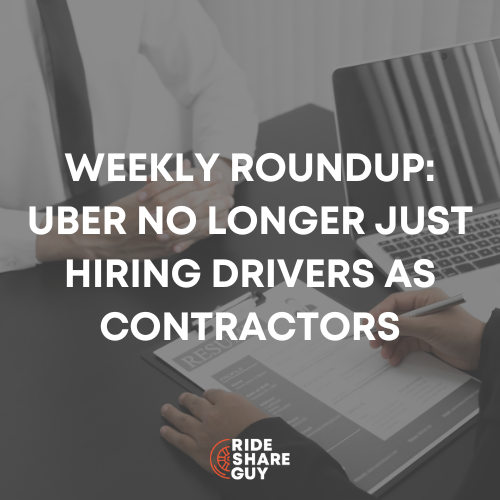In this week’s round up, we’re covering some interesting news related to autonomous vehicles. Senior RSG contributor John Ince covers the unique and different ways Uber and Lyft are handling autonomous vehicles, plus how owning a car might actually be cheaper than always taking an Uber/Lyft.

Uber’s Vision of Self-Driving Cars Begins to Blur [New York Times]
Sum and Substance: After Dara Khosrowshahi took over as Uber’s chief executive last August, he considered shutting the company’s money-losing autonomous vehicle division. A visit to Pittsburgh this spring changed that.
In town for a leadership summit, Mr. Khosrowshahi and other Uber executives were briefed on the state of the company’s self-driving vehicle research, which is based in Pittsburgh. The group was impressed by the progress its autonomous division had made in testing driverless cars in Pittsburgh and in Arizona… They left the meeting energized, convinced that Uber needed to forge ahead with self-driving cars, the people said.
But days after the summit, one of Uber’s autonomous cars struck and killed a woman who was pushing a bicycle across a street in Tempe, Ariz… The accident threw Uber’s autonomous vehicle efforts into flux, immediately forcing the suspension of its self-driving car tests in cities including Tempe, Pittsburgh and Toronto.
Months later, Uber’s executives are divided over what to do with the autonomous business, according to the people familiar with the company. While one camp is pushing Mr. Khosrowshahi to seek partnerships or even a potential sale of the unit, known as the Advanced Technologies Group, a rival contingent is arguing that developing self-driving technology is crucial to Uber’s future, the people said…
In May, Uber announced that it was shutting its driverless testing hub in Arizona and laying off 300 employees. A day later, preliminary findings from federal regulators investigating the crash confirmed what many self-driving car experts suspected: Uber’s self-driving car should have detected a pedestrian with enough time to stop, but it failed to do so. Uber has begun a safety review and plans to publish its assessment in the coming months. Mr. Khosrowshahi has started to subtly de-emphasize the company’s role in developing driverless technology. …
My Take: So far Uber has burned through billions in capital, and what do they have to show for it? Supposedly they’re moving toward profitability with the driver model, but we have no hard evidence of that.
The real hope for investors is in the driverless car vision, removing the drivers from the equation. If Uber were building the entire urban transportation system from the ground up, I might give this vision some credence. But they’re not. They’re dealing with legacy systems, traffic patterns and all kinds of urban rules, congestions and human imperfections that now and for the foreseeable future will require human judgement and intervention.
The real issue here is that investors have bought into an unrealistic vision of the future. Fatalities both with Uber and Tesla vehicles clearly demonstrate that the companies are pushing ahead with this vision and are willing to put the hope of profitability above safety and practicality. And what about the moral implications of replacing drivers with technology? I don’t see this vision becoming a reality anytime soon anywhere but in simplified, controlled environments. What do you think?
Lyft and Aptiv have completed 5,000 paid trips in their self-driving taxis [The Verge]
Sum and Substance: Lyft and self-driving technology company Aptiv have been operating a small fleet of self-driving cars in Las Vegas since the Consumer Electronics Show last January. And today, the companies say they’ve reached a new milestone in their partnership: 5,000 paid rides.
Lyft and Aptiv claim to be operating the only commercial robot taxi service in the US, and perhaps the world. And while there are a number of ride-hailing pilots taking place around the country — Waymo in Phoenix, Cruise in San Francisco, Voyage in Florida — none are yet charging customers to ride in their self-driving cars. Waymo is expected to launch a commercial ride-hailing product in Arizona later this year.
Lyft and Aptiv’s fleet in Las Vegas is modestly sized, just 20 vehicles servicing around the same number of popular destinations along the Las Vegas Strip. They are part of a larger fleet of 75 vehicles that is kept in the city by Aptiv, an offshoot of global auto parts supplier Delphi. The companies hope to add 10 cars to the operation in the coming weeks, as well as new destinations in downtown Las Vegas…
My Take: This is the kind of controlled environment where self driving cars might make economic sense. Even so, Lyft isn’t making any more money on this than they would with a driver behind the wheel, because even with this technology, well, they still have a driver behind the wheel. Is this progress? Lyft thinks so. Do you?
AAA: Ride-sharing services like Uber, Lyft cost more in long run than car ownership [WKBW]
Sum and Substance: A new study shows that using ride-sharing services can end up costing more than owning a car in the long run.
The AAA Foundation for Traffic Safety says the average driver in cities drives about 10,841 miles every year. Using ride-sharing services like Uber or Lyft to go that distance would cost $20,118 annually. AAA estimates that would cost about twice as much as owning a car, including gas, maintenance, insurance and parking costs…
My Take: This study, if accurate, undercuts one of the main talking points of ridesharing companies. I’ve always been skeptical of ridesharing companies’ claims that using their services save passengers money in the long run.
Here, it looks like owning a car, even after repairs and insurance, is cheaper by a factor of two – and remember you still have the residual value of the car. Little by little the research released by the ridesharing companies is being exposed as self serving.
Of course, this is what we might expect – not just from Uber and Lyft – but from corporate America all across the board. Always ask, who’s paying for the research? before you believe it.
Uber Is Finally Growing Up [Fortune]
Sum and Substance: When Dara Khosrowshahi left Expedia to take over for Travis Kalanick as CEO of Uber, he assumed responsibility for resolving a series of potentially fatal business missteps, maintaining high growth, and preparing the company to go public. Uber was in the crosshairs of governments, competitors, employees, and customers, with many questioning its morals.
For most, this would have been career suicide. For Khosrowshahi, it has been an opportunity to demonstrate that moral courage and strategic tradeoffs can drive improved performance. In doing so, he broke past corporate norms and brought reform in three key areas…
What’s next – Khosrowshahi has had an auspicious start at Uber, but his reformation is incomplete. The goal of a level playing field for women and minorities in technology remains distant. Uber’s challenges with regulators are not fully resolved; earlier this month, New York City voted to freeze the distribution of new ride-hailing vehicle licenses for one year while it studies traffic congestion.
And Uber must address the fast-moving competitive frontier in transportation, from autonomous vehicles to electric bikes and to autonomous flying machines.
My Take: This is a nice positive spin on the new Uber and its new CEO. The author makes a lot of good points, but I’m slightly skeptical. Fortune, like Forbes, HuffPost and many other online publications, is now publishing articles like this from “contributors” whose motivation for writing the article and potential connection with the subject matter is unclear and often undisclosed. Journalism is changing, and I’m not sure it’s for the better. I doubt that an article like this would have ever gotten into print three decades ago when I worked at Fortune.
Readers, what do you think of this week’s round up? Do you think self-driving cars will ever be fully “autonomous” without any driver/monitor at all?
-John @ RSG





